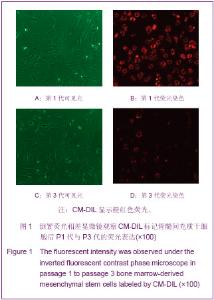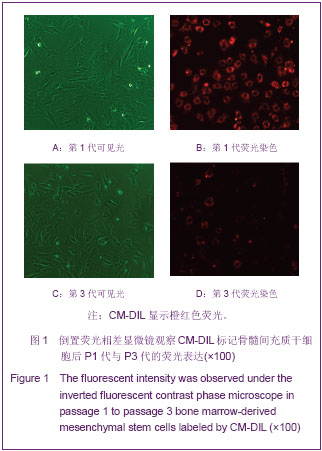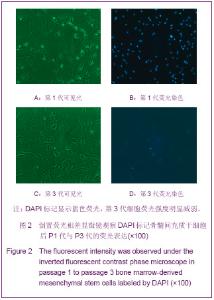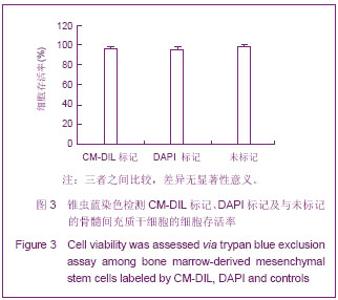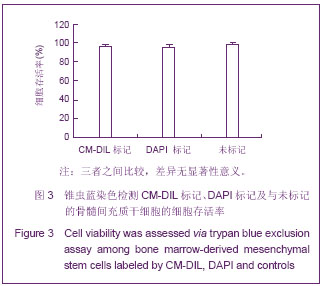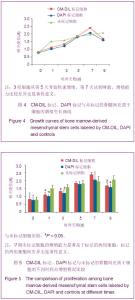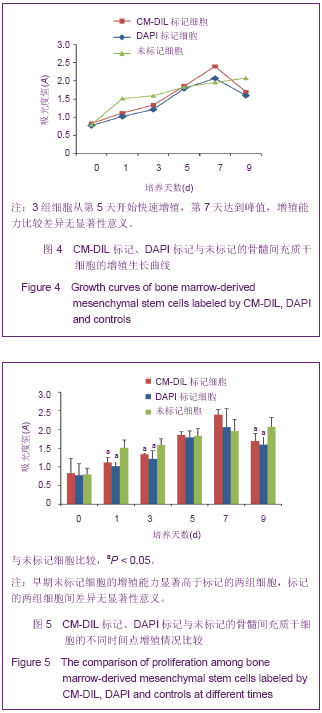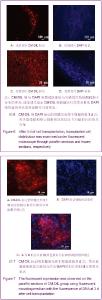| [1] |
Kong Desheng, He Jingjing, Feng Baofeng, Guo Ruiyun, Asiamah Ernest Amponsah, Lü Fei, Zhang Shuhan, Zhang Xiaolin, Ma Jun, Cui Huixian.
Efficacy of mesenchymal stem cells in the spinal cord injury of large animal models: a meta-analysis
[J]. Chinese Journal of Tissue Engineering Research, 2020, 24(在线): 3-.
|
| [2] |
Chen Qiang, Zhuo Hongwu, Xia Tian, Ye Zhewei .
Toxic effects of different-concentration isoniazid on newborn
rat osteoblasts in vitro
[J]. Chinese Journal of Tissue Engineering Research, 2020, 24(8): 1162-1167.
|
| [3] |
Chen Jinsong, Wang Zhonghan, Chang Fei, Liu He.
Tissue engineering methods for repair of articular cartilage
defect under special conditions
[J]. Chinese Journal of Tissue Engineering Research, 2020, 24(8): 1272-1279.
|
| [4] |
Zhang Shengmin, Liu Chao.
Research progress in osteogenic differentiation of
adipose-derived stem cells induced by bioscaffold materials
[J]. Chinese Journal of Tissue Engineering Research, 2020, 24(7): 1107-1116.
|
| [5] |
Wang Tiantian, Wang Jianzhong.
Application and prospect of bone marrow mesenchymal stem cells in the
treatment of early femoral head necrosis
[J]. Chinese Journal of Tissue Engineering Research, 2020, 24(7): 1117-1122.
|
| [6] |
Wang Zhangling, Yu Limei, Zhao Chunhua.
Tissue repair using mesenchymal stem cells via mitochondrial
transfer
[J]. Chinese Journal of Tissue Engineering Research, 2020, 24(7): 1123-1129.
|
| [7] |
Deng Junhao, Li Miao, Zhang Licheng, Tang Peifu.
Three-dimensional hanging-drop culture of mesenchymal stem
cells in the treatment of tissue injury
[J]. Chinese Journal of Tissue Engineering Research, 2020, 24(7): 1101-1106.
|
| [8] |
Ren Chunmei, Liu Yufang, Xu Nuo, Shao Miaomiao, He Jianya, Li Xiaojie.
Non-coding
RNAs in human dental pulp stem cells: regulations and mechanisms
[J]. Chinese Journal of Tissue Engineering Research, 2020, 24(7): 1130-1137.
|
| [9] |
Huang Wenwen, Li Shuo, Hou Zongliu, Wang Wenju.
Pathogenesis of inflammatory bowel disease and mesenchymal
stem cell therapy: therapeutic application and existing problems
[J]. Chinese Journal of Tissue Engineering Research, 2020, 24(7): 1138-1143.
|
| [10] |
Liu Chundong, Shen Xiaoqing, Zhang Yanli, Zhang Xiaogen, Wu Buling.
Effects of strontium-modified titanium surfaces on adhesion,
migration and proliferation of bone marrow mesenchymal stem cells and
expression of bone formation-related genes
[J]. Chinese Journal of Tissue Engineering Research, 2020, 24(7): 1009-1015.
|
| [11] |
Lin Ming, Pan Jinyong, Zhang Huirong.
Knockout of NIPBL gene down-regulates the abilities of
proliferation and osteogenic differentiation in mouse bone marrow mesenchymal
stem cells
[J]. Chinese Journal of Tissue Engineering Research, 2020, 24(7): 1002-1008.
|
| [12] |
Chen Ganghong, Zeng Chaoming, Chen Ziming, Liao Junxing, Ma Yuanchen, Zheng Qiujian .
Intra-articular injection of optimal concentration of bone
marrow mesenchymal stem cells for treating rabbit cartilage defects
[J]. Chinese Journal of Tissue Engineering Research, 2020, 24(7): 996-1001.
|
| [13] |
Zhang Wen, Lei Kun, Gao Lei, Li Kuanxin.
Neuronal differentiation of rat bone marrow mesenchymal stem
cells via lentivirus-mediated bone morphogenetic protein 7 transfection
[J]. Chinese Journal of Tissue Engineering Research, 2020, 24(7): 985-990.
|
| [14] |
Wu Zhifeng, Luo Min.
Biomechanical analysis of chemical acellular nerve allograft
combined with bone marrow mesenchymal stem cell transplantation for repairing
sciatic nerve injury
[J]. Chinese Journal of Tissue Engineering Research, 2020, 24(7): 991-995.
|
| [15] |
Huang Yongming, Huang Qiming, Liu Yanjie, Wang Jun, Cao Zhenwu, Tian Zhenjiang, Chen Bojian, Mai Xiujun, Feng Enhui.
Proliferation and apoptosis of chondrocytes co-cultured with
TDP43 lentivirus transfected-human umbilical cord mesenchymal stem cells
[J]. Chinese Journal of Tissue Engineering Research, 2020, 24(7): 1016-1022.
|
